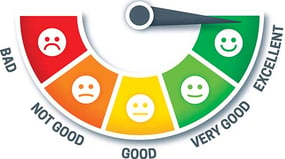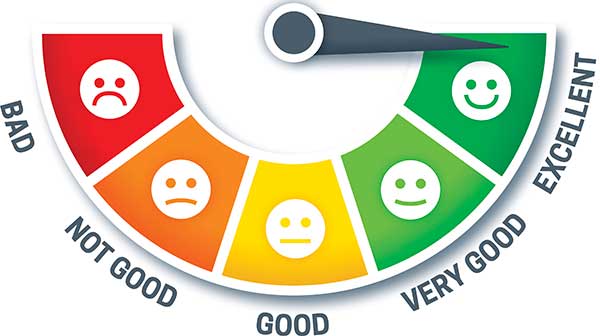Your business depends on its technology infrastructure to support your team, operations, and objectives. But many small business owners don’t know how to effectively measure the success of their managed IT support systems. Without knowing the parameters to analyze, they simply rely on observation and feedback from their current team.
When we meet with businesses, some of the comments we hear that raise a red flag include:
- My IT people must be great - they are always here onsite.
- I don’t know what I’m spending on technology this year? Next year? In next 3 years?
- My IT services provider is super smart – most of the time, I don’t even understand what they are talking about.
Your information technology is a critical component of your business. It should be measured, analyzed, and evaluated constantly to ensure your technology is working for your business and not against it.
Is your business plan missing something?
Technology powers your business, but it can also hold it back. As your company grows, make sure your technology solutions can keep up and help you hit your goals. Don't be caught without a plan.
Evaluate your Managed IT Support Services
Once you know what to look out for, evaluating your IT environment and managed IT support is much clearer. Here are eight key indicators to help you make sense out of your IT support performance. The first three signs involve the most visible aspect of your IT support – tickets. IT tickets are the support requests you and your team make to your managed IT Help Desk, either via an online customer portal, email, or phone. The final five indicators cover more strategic signs that assess the health of your overall IT operations.
1. Amount of time spent on IT support tickets
It’s a good idea to periodically review the amount of time your provider spends on IT support tickets. If you regularly experience long ticket resolution timeframes, this is a sign that you should investigate further.
Although you are not paying your Help Desk by the hour in a managed IT services arrangement, think about the larger impact it has on your business and end users. It may not matter to you if your outsourced IT staff is spending a lot of time on a ticket, but how is that affecting your employee who is waiting on that issue to be resolved? Even if their system is not completely down, their performance is still impacted in some way. What effect does their downtime and decrease in productivity have on business operations?
It’s true that IT issues vary in terms of complexity and involvement. However, if your average resolution time is high, it may indicate that there is some kind of systemic flaw in the process your current IT support provider employs.
2. Number of tickets over time
The number of tickets is another quantifiable method in which business owners can measure managed IT performance. When working with a new provider, you should expect to see your IT problems increase initially. This is common as your provider works to stabilize your infrastructure, implements new tools like network monitoring and managed anti-virus, and performs updates. However, after a few months, the number of ticket requests should begin to decrease continuously as the proactive management of your infrastructure begins to prevent issues from occurring.
If you experience high ticket numbers on a consistent basis, take a closer look to see where it is coming from. Are they new trouble tickets, or old ones being reopened because the problem wasn’t fixed the first time? If they are new tickets, it may indicate that your provider isn’t using the necessary proactive management tools to prevent issues and ensure your infrastructure is well-maintained. If they are existing tickets being reopened, that points to the practice of rushing through tickets without ensuring proper resolution.
3. Ticket response and communication
This is one of the most common complaints we hear, and the one you will likely identify first when your team becomes frustrated. If you don’t know, ask your provider what you should be able to expect in terms of ticket response time. This is not the automated response you might get from submitting a ticket in an IT support portal, but the actual response from either a support technician, engineer, or service coordinator. They may not have a contractual SLA (service level agreement) but they should have documented timeframes indicating expected response times. Understand what they are and hold them to it. If you submit a support request and don’t get a response for a couple of days, that’s a problem.
Also, pay attention to the ongoing communication you receive throughout the issue resolution. Although this is less quantifiable, it is still important. Are you being updated about ticket status and progress in a timely fashion or are you constantly chasing your provider for updates? Once a problem is resolved, is the ticket properly closed and communicated to your satisfaction? If you are spending time trying to get the status of open IT tickets, you are not spending your time wisely.
4. Inverted IT support strategy & disaster recovery leadership
You hired your IT services provider because your time is too valuable to spend in technology tasks, support, and planning. A managed IT provider should address all of these needs for your business. You must be able to trust your provider to educate you on how your business is doing, and what it needs - technically-speaking – to help your business reach its goals. They should provide relevant, appropriate technology guidance and recommendations aligned to your overall business strategy. You should also be able to rely on their expertise and technical leadership to ensure business continuity and disaster planning strategies
In addition to recommending new solutions, your IT support services provider should continuously analyze your network infrastructure, review your IT tickets, and identify any trending issues or potential future problems. In doing so, they can proactively address the root causes and reduce the number of problems you have.
If you are the one leading new IT initiatives and strategic technology direction, you are not receiving the expert guidance you signed on for. Your IT team should be your business’ biggest IT advocate, bringing their expertise and insight to improve your technical foundation, support business operations, and enhance cyber security.
5. The constant upsell
I am deliberately listing the upsell next. Although it is expected and critical that your IT provider actively brings you recommendations for new solutions or projects as stated above, this should always be made in due diligence with your business needs in mind.
Recommendations should stem from technical reviews and strategic analysis of your IT infrastructure by a member of IT management, such as a virtual CIO, not a sales person. They should be rooted in desired outcomes, whether that be new capabilities, efficiencies, or risk mitigation, and tied to business goals. Common recommendations might include access efficiencies like cloud services for file sharing or security initiatives such as multifactor authentication.
We also like to prioritize recommendations so clients can see the urgency level and make plans accordingly in an informed, deliberate manner.
Technical recommendations shouldn’t feel random or even too bleeding edge for the average business. If you feel like you are constantly on the receiving end of a salesy upsell, you probably are.
6. No IT budget visibility
One of the biggest advantages to a managed IT services platform is the predictability and visibility it provides to small business owners. New equipment needs are mapped out well in advance via the implementation of an equipment lifecycle refresh plan. Ongoing technical reviews and strategic planning help to inform IT budget documentation. This allows the business to identify new technology initiatives and prioritize spending over a year, three-year, or even five-year period. Even allocations for unforeseen expenses can be estimated to create a documented IT budget that will minimize emergency expenditures.
A documented IT budget is a basic part of a managed IT support program. If you don’t have one, or don’t know how much you can expect to spend on IT in the next year that is unacceptable.
7. Say what? Tech-speak
Many industries use acronyms, jargon, or some sort of slang that comes to feel like common knowledge. But what is common within the industry might as well be a foreign language outside of it. The technology industry in particular is well-known for using “tech-speak”. And in some situations, that is okay. However, when it comes to providing IT support to your employees or explaining why you need to invest in a new system, it’s not okay.
If you and your team struggle to understand what your IT support provider is saying, it is important to call them out on it. Although a programmer or systems engineer may have a tough time getting out of the weeds, you should have an account manager or support coordinator who can help you make sense of the tech-speak.
Ask your provider if they provide customer service or communication training to their technical employees. This can really differentiate one provider from another. Many managed services providers (MSPs) focus on ongoing technical training (which is important too!) But the ones who invest in making sure their team can communicate effectively on the business level are the ones with whom your team might be most comfortable.
8. Cost vs. Investment
A managed approach to IT support and strategic technology planning should deliver increased stability, higher performance, and enhanced cybersecurity. What’s more, it provides small business owners with greater visibility, strategic direction, and measurable outcomes. Technology expenditures should be considered an investment in the business and its goals. It is thoughtfully planned and documented in a budget and strategic plan deliberately designed to produce a desired result for the business.
If your business still sees technology spending as a cost to the business, it may be a sign that your current support model is still rooted in the old break/fix mindset. The focus should be more than simply keeping things running. If your IT support and systems are not delivering results tied to business goals, then it is not enough to transition your mindset to an investment model.
Your business technology is the foundational tools on which you depend to help your business grow and reach its goals. Using these key indicators, you can more clearly review your current IT support services and technical support to ensure your business receives the support it deserves.
Interested in more tips on how you can improve the performance of your business technology infrastructure? Our Business IT Checklist shows you the 7 steps you need to take to enhance your business technology immediately.
Follow Our Learning Center for the Latest Developments in Technology and IT Support!
 |
||
















